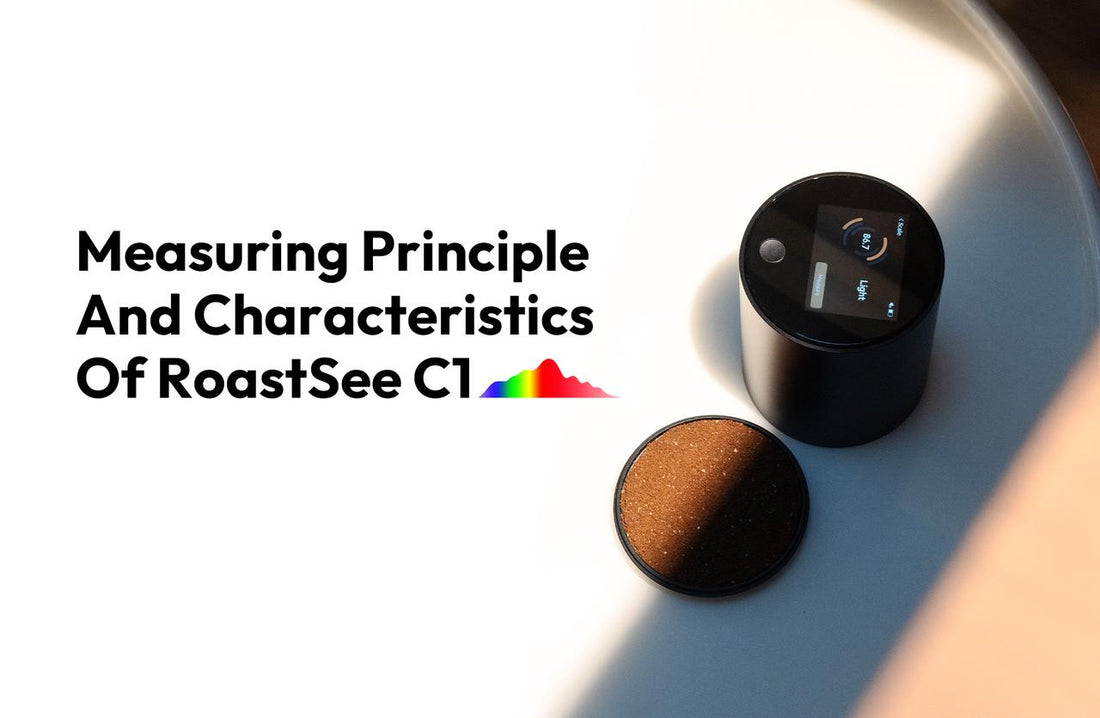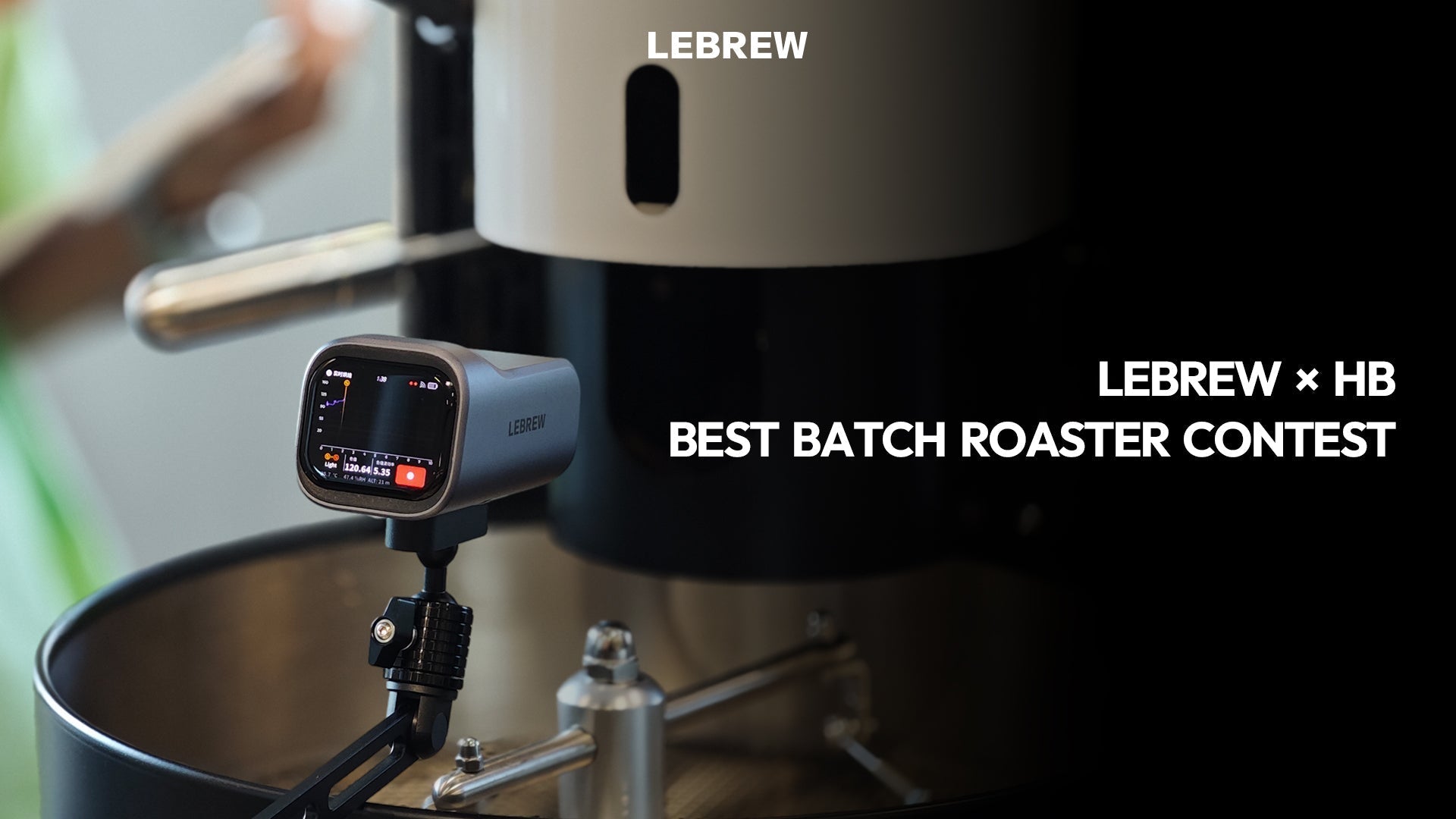LeBrew RoastSee C1 | How a Coffee Roast Color Analyzer Works & Why Accuracy Matters

Abstract
A coffee roast color analyzer relies on Near Infrared (NIR) technology to quantify roast levels with precision. NIR refers to electromagnetic waves between visible and mid-infrared light, and because different substances exhibit unique absorption characteristics, it's widely used in roast color meters, including most roast color meters available on the market today, like the LeBrew RoastSee C1.
Table of Contents
How Does a Roast Color Meter Work?
When roasters use a coffee roast color analyzer, a near-infrared emitter directs specific NIR wavelengths onto the surface of coffee grounds or beans. Compounds in coffee—such as those containing N-H, O-H, and C-H bonds—absorb certain NIR wavelengths while reflecting others. A sensor captures the reflected light, and the device calculates the difference between the emitted and reflected energy. This data is then converted into Agtron values and roast degree, which are visualized on the screen for roasters to reference.
What Factors Cause Inaccurate Coffee Roast Color Meter Readings?
1.Uneven Sample Surface
If coffee grounds or beans are not evenly leveled in the sample container, the NIR light reflects unevenly, leading to inconsistent roast meter readings or low readings.

2.Compressing the Coffee Grounds
Applying force to flatten the grounds increases density and reduces surface roughness. This enhances direct reflection rather than scattering, causing an increase in reflectance and an artificially higher reading.

3.Wide Particle Size Distribution
Different burrs yield different grind distributions. Burrs that produce a wide range of particle sizes (even at the same grind setting or sifting result) can lead to inconsistency. Fines filling gaps between larger particles can alter the light-scattering surface, impacting NIR reflectance and thus the coffee roast color score.

4.Using Containers with Incorrect Depth
NIR light has strong penetrative ability. Sample containers are typically engineered with an optimal depth. If the container is too shallow, NIR light can reach the container’s bottom, reflecting more light and inflating the measured value.

5.Temperature of the Sample
Higher temperatures can shift the absorption wavelengths of certain compounds in the coffee, causing deviation from readings taken at room temperature.
6. Differences in coffee bean storage time
As coffee ages, the chemical compounds within it degrade gradually. Changes in the concentrations of N-H, O-H, and C-H bonds affect the way NIR light is reflected. Beans with a significant amount of surface oil can also influence the results.
How to Improve Accuracy and Consistency
- Use a roast color meter that incorporates VIS+NIR fusion technology, such as the LeBrew RoastSee C1. This combination improves accuracy by providing a more robust correction model.
- Choose burrs with a tight and consistent particle distribution, which helps stabilize surface characteristics during measurement.
- Measure coffee color at room temperature, not immediately after roasting when beans are still hot.
- Avoid compressing coffee grounds when leveling them in the sample dish.
-
Most importantly, roasters should aim to measure under consistent and familiar conditions—using the same grinder, technique, and environment. This is key to ensuring accurate and repeatable readings from your coffee roast color analyzer, such as the LeBrew RoastSee C1. While different devices and grind settings may yield slightly varied Agtron results, developing consistent internal standards will help roasters maintain their preferred roast profiles over time.
Have Questions or Suggestions?
If you have any feedback or would like to know more, feel free to contact us at:
service@lebrewtech.com



